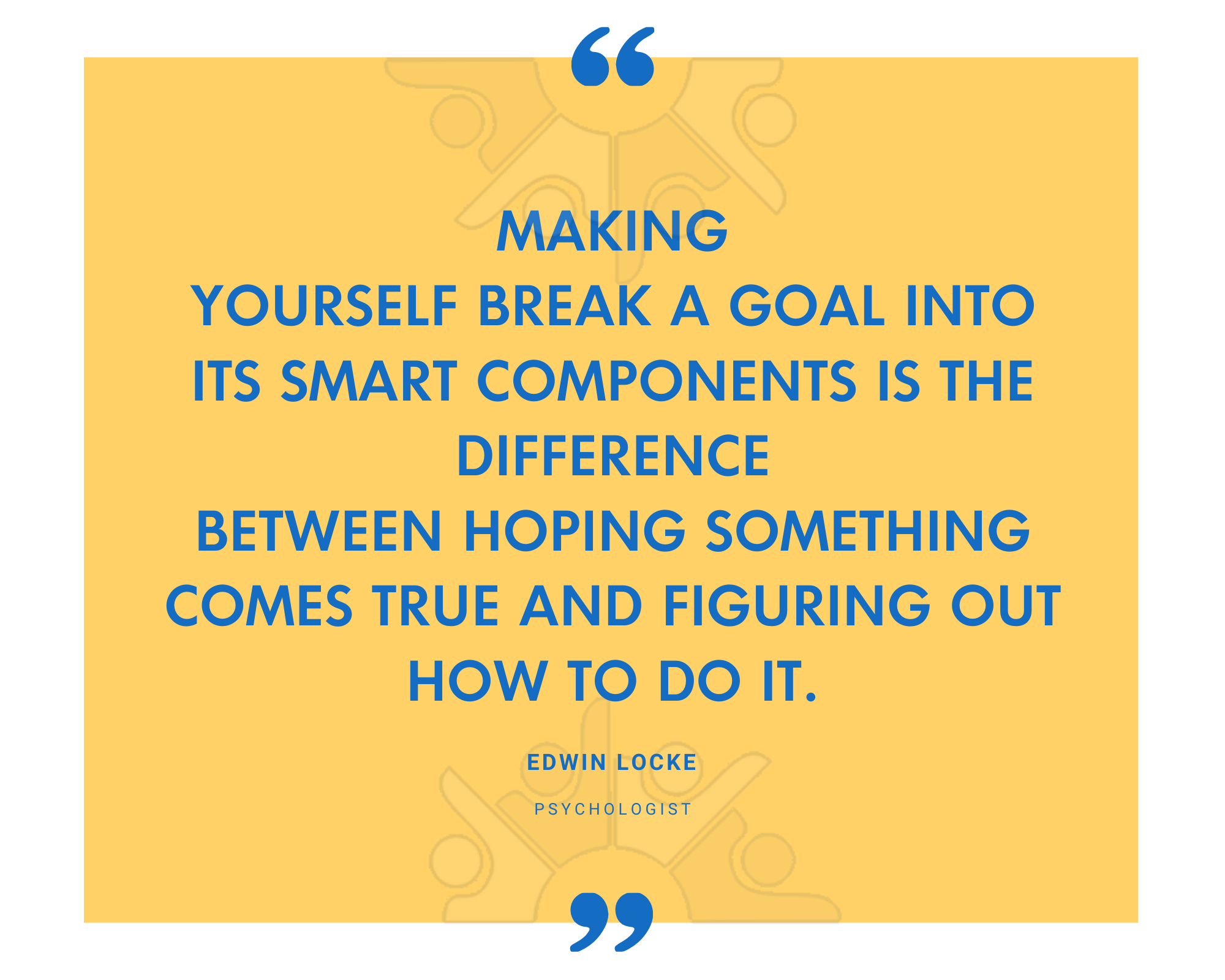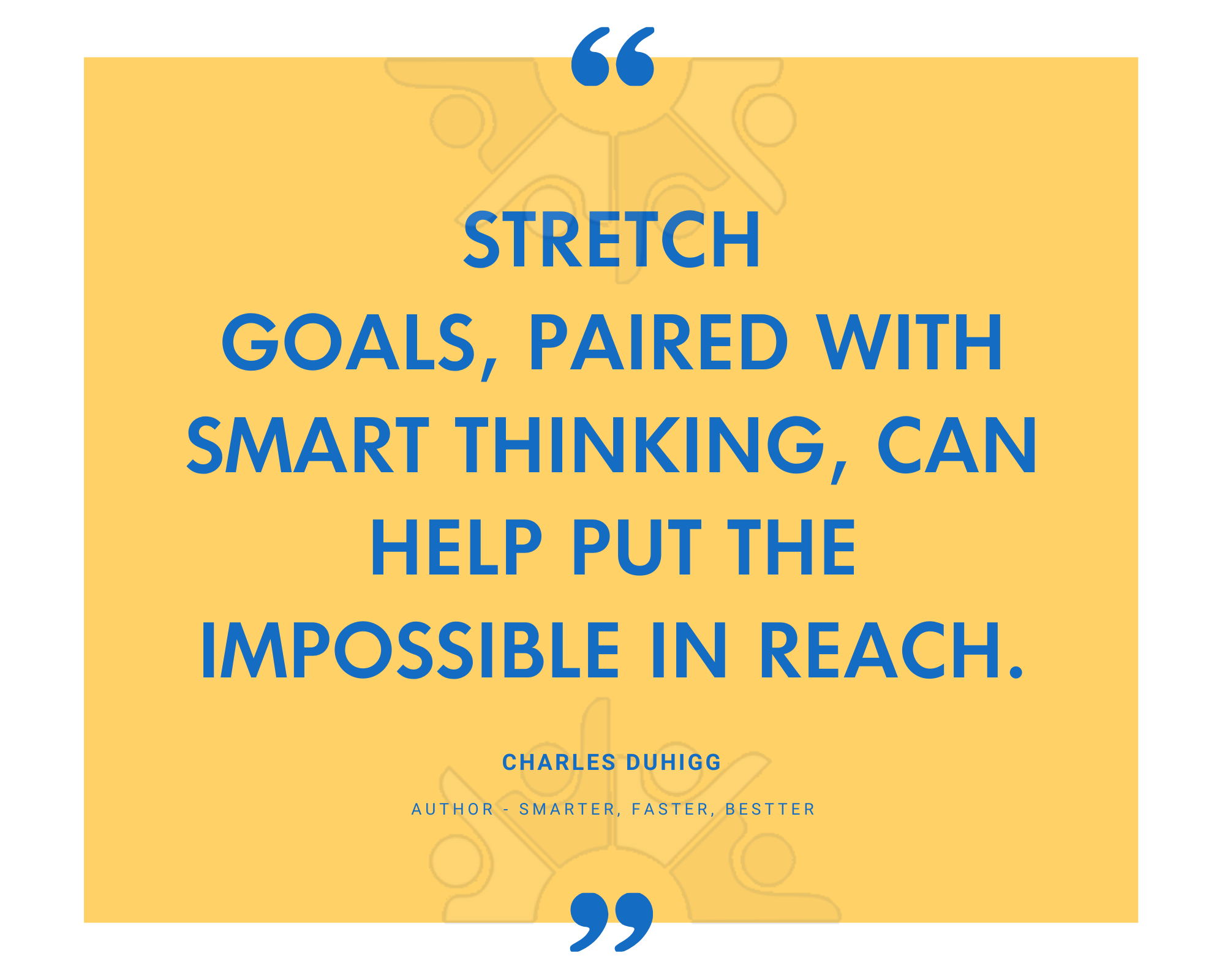Setting ambitious long term goals is one of the keys to the success of any company. But failing to structure a clear path to accomplishing these goals can be fatal, leaving your company overstretched and losing sight of the bigger picture.
The answer to this problem is to pair your long term ambitions with a short term action plan, by merging SMART and stretch goals as a focused component of your performance management process (LINK STAFF CIRCLE). Let’s take a look at the pros and cons of these two approaches to goal setting, and how blending the two will lead to optimal performance for your company

SMART goals
SMART goals began life in 1981 when George T. Doran, former director of the Washington Power Company, published the paper, “There’s a SMART Way To Write Management Goals and Objectives” in the Management Review journal. An acronym for Specific, Measurable, Attainable, Realistic and Timeline, they set out to establish achievable goals, outlined in a way that pointed to a concrete plan of action.
Pros
- Allows you to focus. With clear goals before you, it’s easier to make sure that you focus on the priorities which will help you achieve your goals.
- Keeps your priorities clear in mind. Having your tasks set out before you allows you to keep check on which should be prioritised and which ones can wait. This ensures you manage your time more effectively.
- Gives a sense of manageable attainment. With narrower and clearer goals it reduces potentially overwhelming tasks into reasonable chunks. Set your goals with this in mind and accomplishing them can be more satisfying.
Cons
- Distracts you from doing the right thing. As psychologist Gary Latham explains, “You get into this mindset where crossing things off your to-do list becomes more important than asking yourself if you’re doing the right things.”
- Causes you to focus on the trivial. Mundane tasks, such as ordering stationery supplies, can be unnecessarily applied to the SMART process, leading employees to spend time making sure routine objectives fit the SMART criteria.
- Feeds achievement addiction. Clear and attainable objectives can lead to tunnel vision and a pursuit of the dopamine hit from completing a task, even if it’s no longer a priority.
- Goal worship. Too much emphasis on setting and achieving goals can lead to a lack of flexibility and an inability to think beyond the short term goals and see the bigger picture.

Stretch goals
SMART goals might be great for dealing with short term ambitions, but if you want your company to be pushing for long term and ambitious goals, then stretch goals are the way to go. Committing to seemingly ambitious or out of reach goals might seem like bad advice, but numerous studies have confirmed that this approach can lead to impressive jumps in productivity and innovation.
Pros
- Seemingly impossible tasks encourage creative thinking. If you’re asking your employees to perform the impossible, it may well lead them to imaginative solutions they wouldn’t otherwise have considered.
- Stretch goals encourage innovation. Allowing your employees the opportunity to think big can spur unanticipated innovations. For instance at 3M, stretch goals led to the development of Scotch tape and Thinsulate.
Cons
- Stretch goals can lead to panic. If the goal is too audacious it can frighten employees and lead them to believe success is impossible. There’s a fine line between inspiring bigger thinking and crushing morale.
- Pushing top performing teams can increase stress. When teams are already performing optimally, adding a stretch goal can increase absenteeism and demotivate performance.
- Employees might be tempted to take unnecessary risks. While sometimes risky goals are desirable, they can also lead to unexpected failures and setbacks and jeopardise the well-being of both the individual and the company.
Eliminate the cons by pairing SMART and stretch goals

IMAGE QUOTE “Stretch goals, paired with SMART thinking, can help put the impossible in reach.” Charles Duhigg, Author Smarter, Faster, Better
While SMART and stretch goals have their benefits and shortcomings when used independently, when combined into an effective performance management system they can supercharge your employees to hit the most ambitious targets while creating a culture of innovation.
Stretch goals can feel overwhelming, so by tying them into SMART goals introduces a disciplined mindset which breaks it down into short-term, manageable parts. Within the field of psychology, these subgoals are known as “proximal goals” while long term goals are known as “distal goals”, and studies have shown that pairing these two goal types increases the chances of the goals being achieved:
“When distal and proximal goals are unconnected, they are less motivating. People are more likely to persist and achieve distal goals if they are connected with proximal goals. They are more likely to complete a proximal goal if it is connected to a personally meaningful distal goal. For example, one reason why people are so strongly motivated to play video games is that they present a hierarchy of connected goals.”
Using to-do lists to pair stretch with SMART goals
One way to accomplish this is to pair your stretch goals with SMART goals on a to-do list. Start by listing your biggest ambitions, such as starting a new company or expanding your existing company’s revenue by 10x per annum. Then, break this main objective down into short term goals which can be measured in concrete steps. Consider what steps you can take towards your stretch goal in the coming days, weeks and months.
While it isn’t strictly necessary to ensure that your proximal goals fulfil every aspect of SMART goals, having a large ambition coupled with a system for figuring out how to get there allows you to transform the goal into something clear achievable.
Using an effective performance management system will guarantee that your employees, teams and your company is on track to stretch for success.





